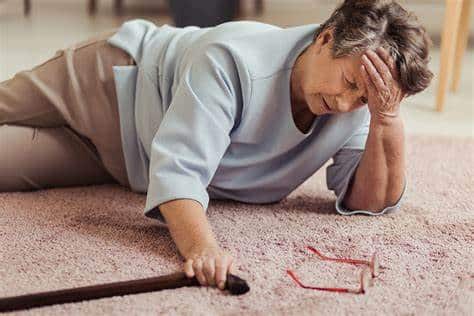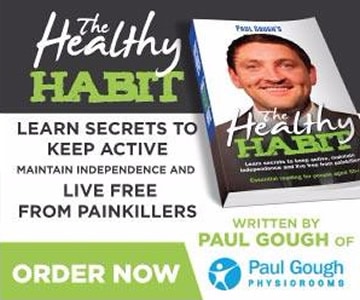As we age, it’s common to notice small changes in our steadiness. Maybe you feel a bit more cautious stepping off a curb, or you find yourself reaching for furniture as you move around your house. While these may seem minor at first, they can be early signs that your balance is shifting—and it’s important to pay attention.
The good news? You have more control than you might think. Improving your balance after 65 is not only possible—it’s essential for maintaining your independence, confidence, and quality of life. And it doesn’t take a gym membership or complicated routine. With small daily habits, safe movements, and the right support, you can stay steady on your feet and reduce your risk of falls at home.
At Savoy Therapy, our mission is to help older adults age fearlessly—and that starts with giving you tools that empower you to move with strength and confidence.
Why Balance Matters More Than Ever After 65
According to the CDC, 1 in 4 adults over the age of 65 falls each year, and many of these falls happen at home during routine activities. What’s more, a single fall—even if it doesn’t result in injury—can lead to a fear of falling, which may cause people to limit their movement, reduce their activity level, and unintentionally weaken their balance even further.
That’s why focusing on balance after 65 is so critical. It’s not just about preventing a fall—it’s about protecting your freedom to do the things you love: going to the store, gardening, walking with a friend, or playing with your grandkids.
Improving balance gives you the foundation to stay active and independent for years to come.
What Causes Balance to Change With Age?
There are a few key reasons balance becomes more difficult as we get older:
- Muscle Weakness: As we age, we naturally lose muscle mass, especially in the legs. This affects how stable we feel while standing and walking.
- Joint Stiffness: Reduced mobility in the ankles, knees, and hips can make it harder to adjust and respond to movement.
- Changes in Vision: We rely heavily on our eyesight for balance. Changes in depth perception and vision clarity affect how we move.
- Inner Ear Changes: The vestibular system inside our ears helps us maintain balance. With age, it becomes less responsive.
- Medications and Health Conditions: Some medications or conditions like neuropathy, arthritis, or low blood pressure can impact how steady we feel.
The key takeaway is this: while changes are normal, they are not untreatable. Many balance issues can be improved or managed with the right exercises and strategies.
How to Improve Balance at Home: 6 Proven Strategies
You don’t need expensive equipment or long workouts to begin improving your balance. Here are six evidence-based, home-friendly methods you can start using today:
1. Practice the Heel-to-Toe Walk
This simple exercise helps train coordination and posture.
How to do it:
- Stand tall and place your heel directly in front of the toes on your opposite foot.
- Walk in a straight line, taking slow, deliberate steps.
- Use a wall or countertop for support if needed.
Do this for 10–20 steps daily. It builds awareness and foot control.
2. Strengthen Your Ankles and Calves
Your lower legs play a big role in keeping you upright.
Try this:
- Stand behind a sturdy chair.
- Hold the chair for balance.
- Rise up onto your toes and lower back down slowly.
- Repeat 10–15 times.
This exercise improves the muscles used in walking and standing.
3. Improve Single-Leg Stability
Balancing on one leg is one of the best indicators of balance strength.
Try this:
- Stand near a counter or table.
- Lift one foot a few inches off the ground.
- Hold for 10–15 seconds, then switch sides.
- Gradually increase your time as you improve.
4. Check Your Home for Trip Hazards
Many falls happen at home—and they’re often preventable.
Here’s a simple checklist:
- Remove loose rugs or secure them with non-slip pads.
- Keep walkways clear of clutter or cords.
- Add nightlights in hallways and bathrooms.
- Install grab bars in bathrooms or near steps.
- Use sturdy, supportive footwear indoors.
These simple changes can reduce your risk instantly.
5. Add Gentle Movement into Your Routine
Daily movement keeps joints limber and muscles engaged.
Great options include:
- Chair-based exercises (like seated leg raises)
- Tai chi
- Gentle stretching routines
- Short indoor walks or laps around your home
The goal is consistency—not intensity.
6. Stay Hydrated and Eat for Strength
Dehydration and poor nutrition affect balance, too.
Be sure to:
- Drink plenty of water throughout the day.
- Eat protein-rich foods to support muscle health.
- Include foods high in calcium and vitamin D for bone strength.
What About When Balance Issues Are Linked to Nerve Changes?
Sometimes, balance issues are linked to underlying nerve problems—such as neuropathy. If you’ve been noticing tingling, numbness, or “not feeling your feet,” you may benefit from additional support.
While not every balance issue is related to nerve changes, it’s important to investigate further if you’re noticing both unsteadiness and foot/leg sensations. At Savoy Therapy, we help clients determine what’s contributing to their changes and provide personalized options that don’t focus on pills, injections, or surgery.
Why Waiting Isn’t Worth the Risk
Many people wait until they’ve already had a fall—or a close call—before taking steps to support their balance. But the most effective fall prevention starts before something happens.
Improving balance doesn’t mean you have to do hours of exercise or completely change your lifestyle. With just a few minutes each day and some guidance from the right experts, you can build strength, increase awareness, and regain confidence in your body’s ability to move safely.
When to Seek Professional Support
If you’re feeling uncertain on your feet, noticing changes in your coordination, or avoiding activities out of fear of falling—it may be time to speak with a professional. A physical therapy assessment can help you understand what’s going on and guide you toward a plan that works for your needs and comfort level.
At Savoy Therapy, we offer Free Discovery Visits to help you explore your options, identify balance risks, and create a personalized plan that supports your independence at home.
Your Next Step: Stay Steady, Stay Independent
Balance is more than just physical—it’s peace of mind. Knowing you can move safely through your day without hesitation or fear is life-changing. And it’s completely within your reach.
🟢 Ready to take action?
Download our free Falls & Balance Guide for more home-friendly tips and strategies to keep you steady.
📥 Book your Free Discovery Visit here
Whether you’re just starting to notice changes or you’ve been feeling unsure for a while, it’s never too late to work on your balance and build a safer path forward.


